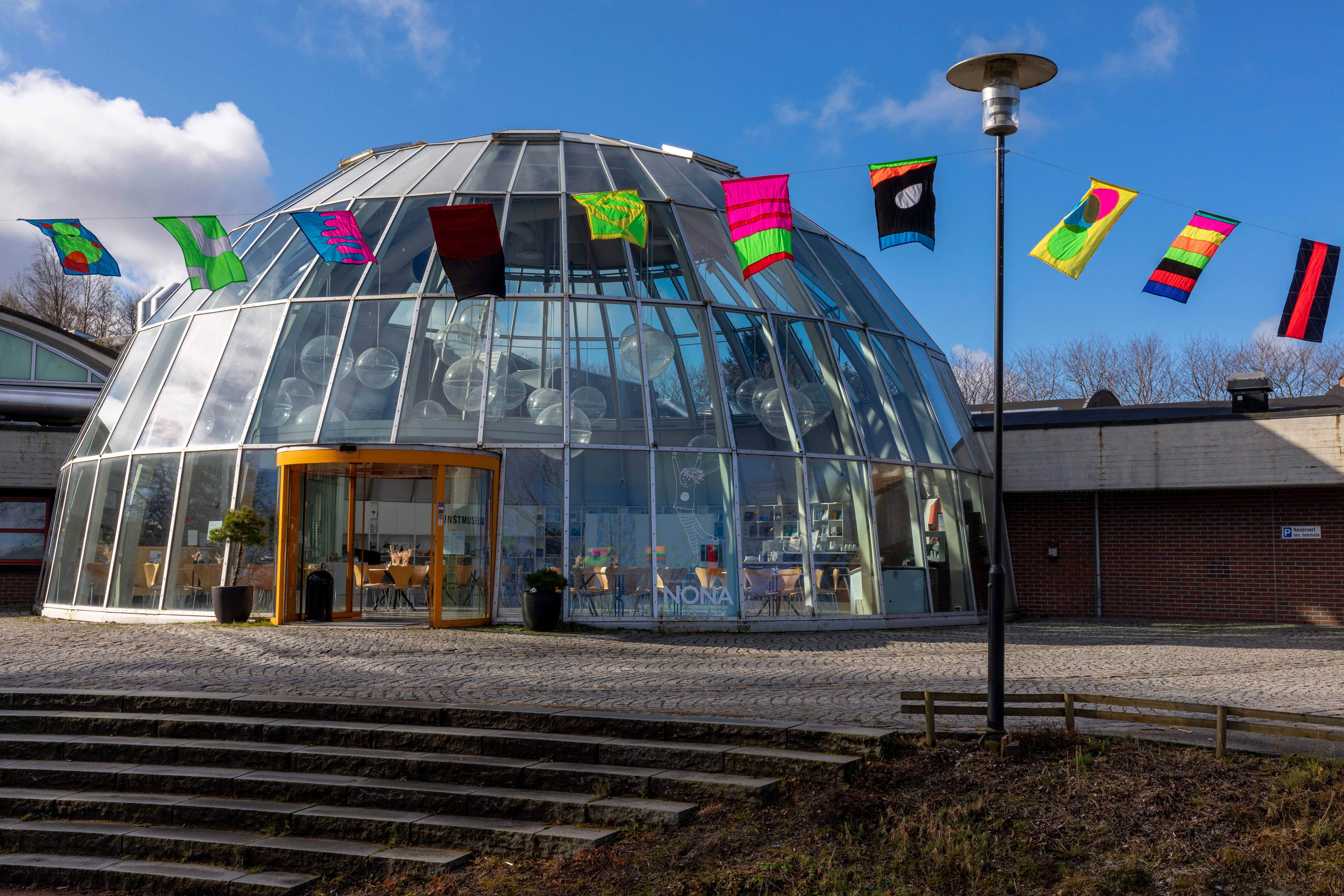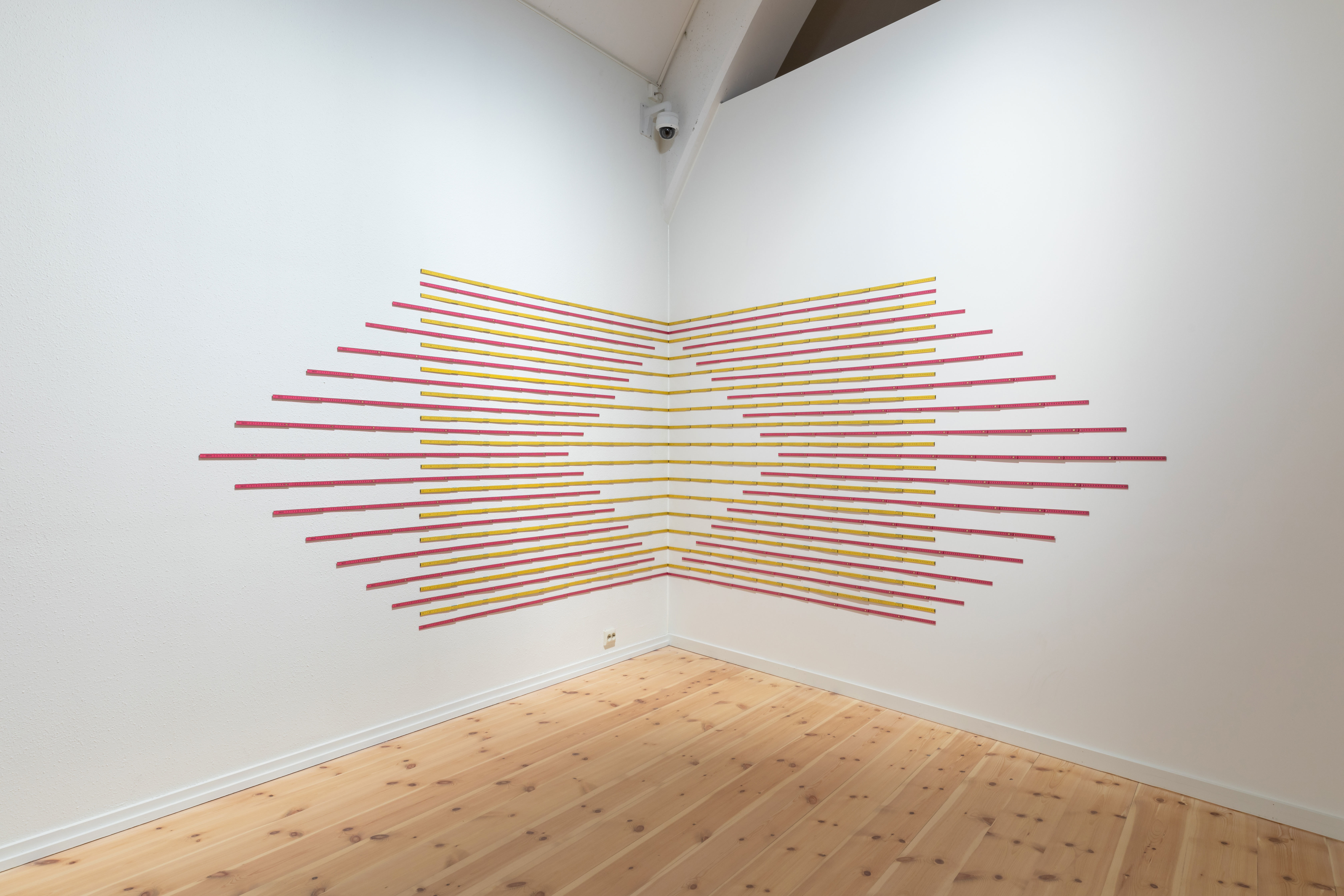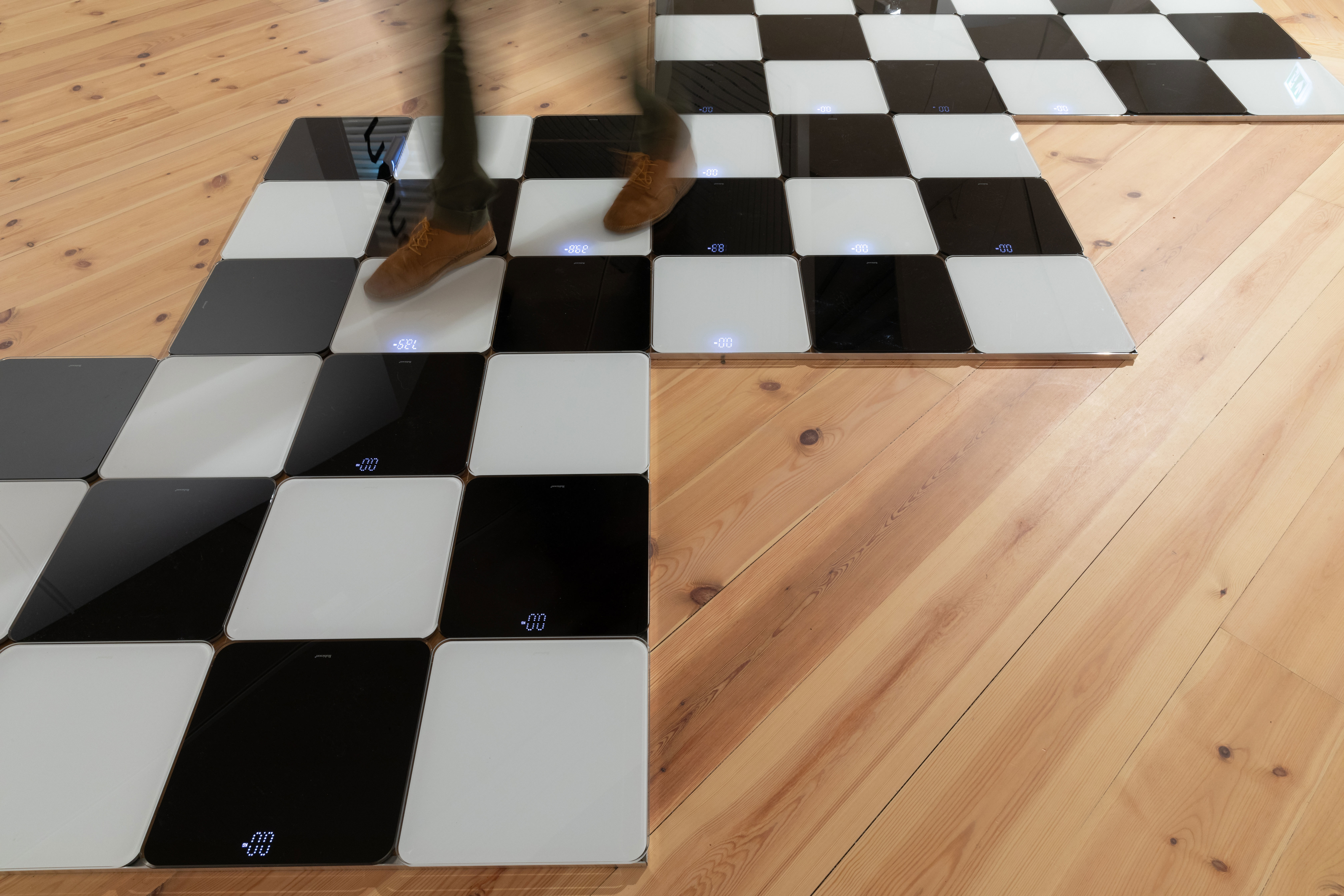Nona: Jacob Dahlgren
See the exhibition online
The art of Jacob Dahlgren (b. 1970) is characterized by bright colors that are usually combined in stripes or other simple geometrical patterns. We are delighted to mark the opening of NONA with the very first exhibition of Jacob Dahlgren’s art in a Norwegian art museum. In collaboration with the artist, we have chosen works that reflect on the potential of form and color, and which invite active participation in the experience of art.
Jacob Dahlgren lives and works in Stockholm, Sweden. He has his education from The Royal Institute of Fine Art Stockholm where he received his M.F.A I 1999. In 2007 he represented the Nordic Pavilion at the Venice Biennale with the work I, the World, Life.
THE POSSIBILITIES OF NONFIGURATIVE ART
Jacob Dahlgren´s artistic practice is marked by research into the possibilities of nonfigurative art, and he uses himself actively in his experiments. In one ongoing art project, he wears a new striped t-shirt every day. Each day the shirt is documented in a photo that is then included in various art works, photo series, films and paintings. In the exhibition there are two video works that shows Dahlgren´s t-shirt project in different ways. In the work I (2019) you get an insight in the daily documentation through a time-lapse video of Dahlgren´s self-portraits the ten last years.

Jacob Dahlgren, I, 2019. Photo: Oddbjørn Erland Aarstad.
By now Dahlgren has collected 1500 t-shirts and the collection is still growing. All the t-shirts are achieved, numbered, photographed and made into nonfigurative digital images. In the work Neoconcrete Space the digital stripes are based on 1000 t-shirts from Dahlgren´s collection.
Jacob Dahlgren, Neoconcrete Space, 2013.
AUDIENCE PARTICIPATION
Dahlgren also invites the public to participate actively and to explore the possibilities of nonfigurative art. Among other things, he explores the potential of color and form through workshops and diverse social activities. We find this kind of exploration in the work No Conflict no Irony (I Love the Whole World). This work was made in collaboration with students from Godalen High School in a workshop January 2020. The students made nonfigurative flags that now hangs outside the museum.  Jacob Dahlgren, No Conflict no Irony (I Love the Whole World), 2020. Ripstop fabric. Photo: Oddbjørn Erland Aarstad.
Jacob Dahlgren, No Conflict no Irony (I Love the Whole World), 2020. Ripstop fabric. Photo: Oddbjørn Erland Aarstad.
Dahlgrens focus on audience participation we can also find in the work The Wonderful World of Abstraction (2016). The work is made of 6400 silk ribbons hanging from the ceiling. You are invited to walk into the work and not just meet the art with your eyes but your whole body.  Jacob Dahlgren, The wonderful world of abstraction, 2012. Silk ribbons and steel. Photo: Oddbjørn Erland Aarstad.
Jacob Dahlgren, The wonderful world of abstraction, 2012. Silk ribbons and steel. Photo: Oddbjørn Erland Aarstad.
EVERYDAY OBJECTS
A big part of Dahlgren´s art is to find and make stripes. The graphic patterns are often made with similar or identical everyday objects in a big scale. In Porto 1968 (2011) he has made a striped image of cloth hangers. We can still recognize that the artwork is made of cloth hangers, but they have lost their initial use. In several of Dahlgren´s works he chooses a random city and year as a title. Dahlgren thinks it´s interesting to let the public freely associated with titles like Porto 1968.  Jacob Dahlgren, Porto 1968, 2011. Cloth hangers in plastic. Photo: Oddbjørn Erland Aarstad.
Jacob Dahlgren, Porto 1968, 2011. Cloth hangers in plastic. Photo: Oddbjørn Erland Aarstad.
In the work Units of Measurements (2020) Dahlgren uses folding rulers to make an image straight on the wall in the exhibition. Dahlgren is here using an everyday object that is often used to mount an exhibition. In the same way as in Porto 1968 the object loses it´s original function and becomes a stiped image where Dahlgren plays with form.  Jacob Dahlgren, Units of Measurements, 2020. Folding rulers. Photo: Oddbjørn Erland Aarstad.
Jacob Dahlgren, Units of Measurements, 2020. Folding rulers. Photo: Oddbjørn Erland Aarstad.
In the work Heaven is a Place on Earth (2020) Jacob Dahlgren has been inspired by the American artist Carl Andre (b. 1935). Carl Andre has made several site-specific installations made from bricks or metal plates put in patterns on the floor. The idea to Heaven is a Place on Earth Dahlgren got from experiencing one of Carl Andre´s works at Tate Modern in London. The public could walk on the installation but there were few who did. Dahlgren watch how the security guards at the museum had to “randomly” walk over the installation to show the visitors that this was allowed. In Dahlgren’s work the geometric patter on the floor is made by bathroom scales. This is an object that we are meant to walk on even though not everyone likes to do so. In the exhibition you must choose if you want to walk past them or on them. The site-specific work was made for the exhibition NONA: Jacob Dahlgren.  Jacob Dahlgren, Heaven is a Place on Earth, 2020. Black and white digital bathroomscales. Photo: Oddbjørn Erland Aarstad.
Jacob Dahlgren, Heaven is a Place on Earth, 2020. Black and white digital bathroomscales. Photo: Oddbjørn Erland Aarstad.

